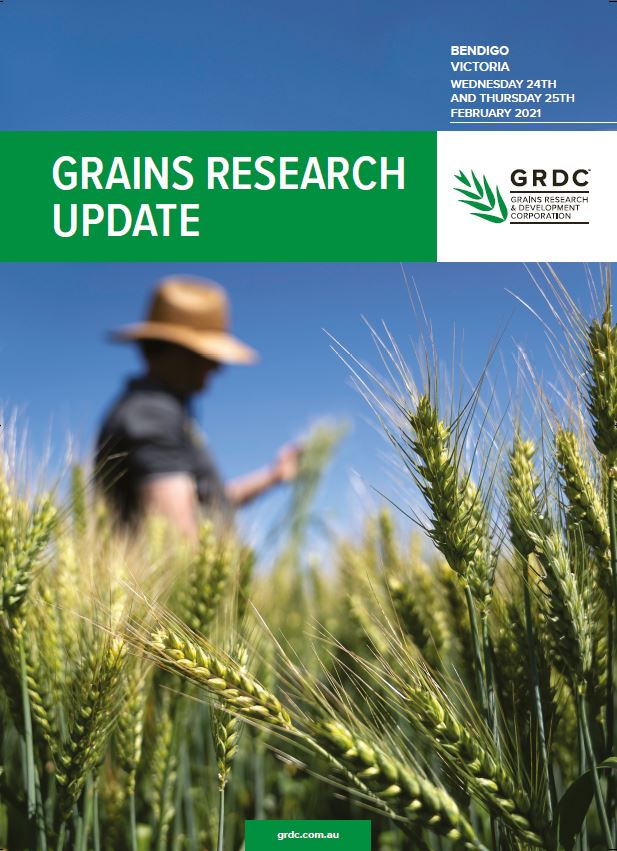2021 Bendigo GRDC Grains Research Update proceedings
2021 Bendigo GRDC Grains Research Update proceedings
Presented at:
-
24th Feb 2021 to 25th Feb 2021Update Event
Bendigo, VIC
Sponsored by GRDC: GRDC Grains Research Update Bendigo
GRDC Grains Research Update Bendigo
Region: South
This page contains update papers presented at the GRDC Grains Research Update Bendigo.
Browse all update papers below or click Download PDF.
Use the media tab to view presentation materials from the event such as power points, images or videos and other media.

Presented at GRDC Grains Research Update Bendigo
-
• An assessment of current ‘rules of thumb’ (RoT) for predicting nitrogen (N) fertiliser requirements in the southern region cropping systems has identified the need to update current assumptions. • Deep soil N testing prior to (or just after) sowing is critical for good fertiliser N management. • Current RoTs and other decision support systems fo...
-
• Everyone has a role to play in agricultural debates in Australia. • The gap between science and the public discourse must be filled with credible evidence to ensure access to key agricultural production tools. • Every independent, science and risk-based regulatory agency has comprehensively evaluated glyphosate and found it safe, when used accor...
-
• Herbicide Mode of Action (MoA) classifications will be updated to align with the new globally aligned system. • The science hasn’t changed – just the classification codes on product labels and literature will change from a letter to a number. • Continue to follow current integrated weed management strategies and rotation plans. • More information...
-
• A new DNA soil testing service, PREDICTA® rNod has been developed to measure Group E and F rhizobia numbers in soil to assist growers to identify the need to inoculate field pea, faba bean, lentil and vetch crops. • PREDICTA rNod is available to South Australia (SA) and Victoria (Vic) growers via PREDICTA® B accredited agronomists in 2021 and wil...
-
• Glyphosate resistance in annual ryegrass continues to increase. • There are ways to optimise glyphosate efficacy. • Partner glyphosate with other herbicides to improve weed control. UCS00020...
-
• Optimising flowering time of wheat and barley cultivars is one of the most cost-effective ways for growers to maximise yield. • The National Phenology Initiative (NPI) is improving Agricultural Production Systems sIMulator (APSIM) Next Gen so that it can accurately predict cultivar phenology classification and optimal sowing dates across Australi...
-
• The canola industry has become more reliant on fungicides to control blackleg, in some regions there is reduced emphasis on cultural practices to reduce disease. • The decision to use a fungicide is not clear cut and should be based on the disease risk profile of the crop. • Severe blackleg crown canker occurs when plants are infected during ear...
-
• Grain yield losses in vetch of on average of 26% were observed in plots with no disease control. • Selecting resistant varieties and applying foliar fungicides will reduce grain yield losses....
-
• Choose the species of vetch and variety depending on your end goals, or desired end-use. • Each vetch species requires different management and agronomy to achieve optimum production. • There is no ‘one size fits all’ approach with vetch, the diversity of end-uses and environments in which vetch is grown, require different agronomic approaches an...
-
• New registrations for Group G herbicides are expanding the ways these herbicides can be used. • The choice of a spike with knockdowns should be based on activity against the most problematic weeds. • Care needs to be taken with pre-emergent applications in light soils and where crop tolerance is not high to keep the herbicide out of the crop row....
